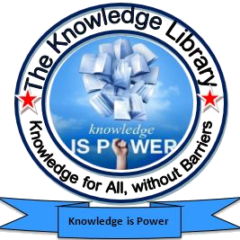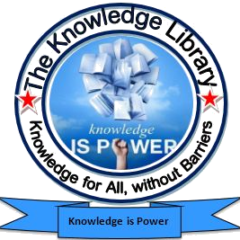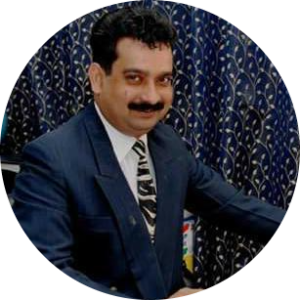Introduction
India had inherited its economic and administrative structures from the colonial and pre-colonial era but the well-defined and comprehensive ideology that inspired it in nation-building came from the national movement. This vision incorporated various political trends both left and right but excluded communalism and ideology of those loyal to colonialism.
Indian national movement was the biggest mass movement in World history probably. It succeeded in politicizing and drawing into political action a large mass of people. Gandhiji believed that the success or failure of a movement relied on the quality of leadership but mass movements are possible only by people’s action and involvement.
Satyagraha which was active non-violent resistance involved millions of people, unlike violent movements which could involve only a handful of committed revolutionaries. Indian leaders who led these movements became confident in the people’s ability to withstand the oppression. It was this that made the leaders who also became the political leaders of independent India declare universal adult franchise unanimously in spite of widespread poverty.
The Independence struggle throughout its life campaigned for civil liberties and representative democracy. The leaders advocated freedom of expression for all and adult franchise and popularized the idea of democratic institutions. The Congress which was the main political body of India was also organized on democratic lines. All questions and courses of action were debated and voted on before deciding on execution. Dissent was also common but not repressed. Different political viewpoints too were encouraged. Thus when congress ministries came to power in 1937 they gave complete freedom of expression to peasant and workers communist parties as well as radical groups like Congress Socialist Party.
The congress leaders protected the freedom of speech and expression of their opponents like Moderate leaders for Lokmanya Tilak, Congress leaders also spoke for Bhagat Singh et al, Congress leaders protested against Bills that sought to curb communism. The Congress party was responsible for popularizing the concepts of democracy, representative government, and freedom to criticize the government. the fruit of this was borne by India as now it has embedded these ideals and they have become part of the society. However, unlike India Pakistan couldn’t embrace these concepts and so the society hasn’t developed expectations for such ideals. The constant turmoil in the polity, weak institutions, and militarism are a result of this. the political party that is responsible for creating Pakistan wasn’t known for popularizing concepts of democracy.
Economic Policy post-independence
The national leaders unanimously advocated self-reliance to be the focus of economic planning in India. The meaning of self-reliance isn’t blocking international trade but supporting India to become an equal partner of trade and not subordinate to anyone. On the question of foreign capital, the polity was divided. Some were against foreign capital as it would suppress Indian capital but some advocated for it arguing that an independent India could use foreign capital to supplement Indian resources.
The restructuring of agrarian society also took place and intermediaries like landlords and renters were abolished a “Land to the Tiller” policy was followed. In the sector of Industrialization, the State-owned and operated large industries of strategic sectors were key for growth and beyond the capacity of private capital. Public sector industries were viewed as Temples of Modern India by Nehru.
Gandhiji however was opposed to all industrialization where machines replaced human labor. He too was in support of State control over industries but disagreed with focusing on modern industry. But he didn’t insist on universal acceptance of his policy. Congress supported integrated and comprehensive planning as the instrument of development and sponsored the National Planning Committee and Indian capitalists to formulate the Bombay Plan in 1943.
Congress had a socialist incline under Nehru and even before his president-ship. The socialists wanted a radical ideology that would be pro-poor and leftist in orientation. However, Congress never decided that socialism would be its objective nor did they want a socialist system like that prevalent in USSR. Congress wanted a system where an egalitarian society would exist and equality of opportunity would be provided to all. It agreed that along with political freedoms social and economic rights too were important. It was this philosophy that enabled it to spearhead many social revolution campaigns against untouchability, free education, and women empowerment. When the question of reservation for SC / ST was being discussed Congress leaders didn’t oppose them.
The base for this economic planning could be traced to the work of Dadabhai Nauroji and other economists who gave the Drain theory. The moderates influenced by this formed an effective economic critique of colonialism [Their greatest achievement].
Secularism
The congress was never able to effectively counter communalism nor could its protest against the British motives to flame communalism but its secular credentials reaped a rich dividend post-independence for India.
The Indian sense of secularism is different from the western concept of the term. The western concept is negative i.e. Separation of state and religion but the Indian aspect is positive i.e. State shall treat all religions equally. Indian leaders never appealed to the religious feelings of the people but focused on social and political aspects. They never targeted the Religion of the British rulers too. Gandhiji thought early on believed politics and religion should be hand in hand but only because of his belief that all religions are moral and politics should be based on morality.
However as the communal elements grew and they instigated people to violent acts in name of religion, Gandhiji changed his views and also preached against the involvement of religion in politics. Because of its firm secular credentials, Independent India kept secularism as its pillar of the constitution, State, and society.
Legacy of National Movement to India
National movement bequeathed to India the politics of accommodation of diverse viewpoints, compromise, and reconciliation of interests.
The highest norms of politics and political behavior were set by the movement. The leadership could mobilize millions only because of its moral integrity. The cadres too were highly motivated and had quit life, and careers for the movement. The movement was highly innovative and responded to changes in the policies of the British as well as the growing demands of Indians.
The legacy of the movement could be summarized as a Commitment to political and economic independence, representative democracy, civil liberties, internationalism, joyous acceptance of diversity, independent foreign policy, and achievement of all objectives through accommodation of all people.
Independent India too has honored this legacy and inculcated it in its institutions and society. However, all legacies erode unless reinforced or reinvented to suit modern needs.
Evolution of the Constitution
When India adopted the Prime ministerial form of government it wasn’t emulating the British Parliament but only formalizing an accepted mode of government that already existed in Congress and which the party and people were familiar with. The pillars of the constitution were the objectives that the Congress was striving to achieve since its inception: Social and political democracy, fundamental rights, responsible and representative government, etc. Thus the constitution was a culmination of activities started long ago.
The work done by the national movement inculcated a spirit of democracy in the people which also led to the constitution’s main focus. Awakening created by the press in spite of colonial repression ensured that freedom of expression would find its place in the constitution. The movement rested on the shoulders of dumb millions and believed in the role of women in the freedom struggle and so even the constitution reflected this.
The British believe that the constitution is a result of the reforms they introduced in India but this is a myth. The British reforms always were introduced grudgingly and belated manner. They often fell short of expectations. Indian demands and aspirations were light years ahead of the British reforms. It was this that led the constitution-makers to borrow from the Government of India Act, 1935. They felt that there was no need to establish their independent credentials and also believed in their familiarity with existing organizations.
Selected aspects of the Constitution
The Constitution makers envisaged a strong center due to the effects of Partition, communal riots, the necessity of maintaining national unity, food crisis, and settling of refugees. However, this wasn’t always the case prior to partition becoming a certain fact the Constituent Assembly didn’t envisage a strong center.
The judicial innovation of the Basic Structure also imposed limits on the amending power of the Parliament. This was done to check executive excesses.
British power in India was based on the steel-framed bureaucracy which was used to stifle the national movement. It was the break in the unrelenting support of the Indian administration and the Indian army to the British that hastened the end of the Colonial era. After Independence, the structure of the Indian Civil Service – A cadre of officers who were overpaid, insensitive and British loyalists, remained the same. This was due to partition, political turmoil, refugee crisis, and riots and in this situation, ICS remained an island of stability.


 Users Today : 40
Users Today : 40 Total views : 463707
Total views : 463707